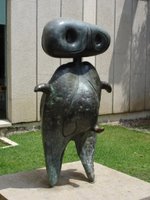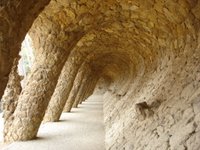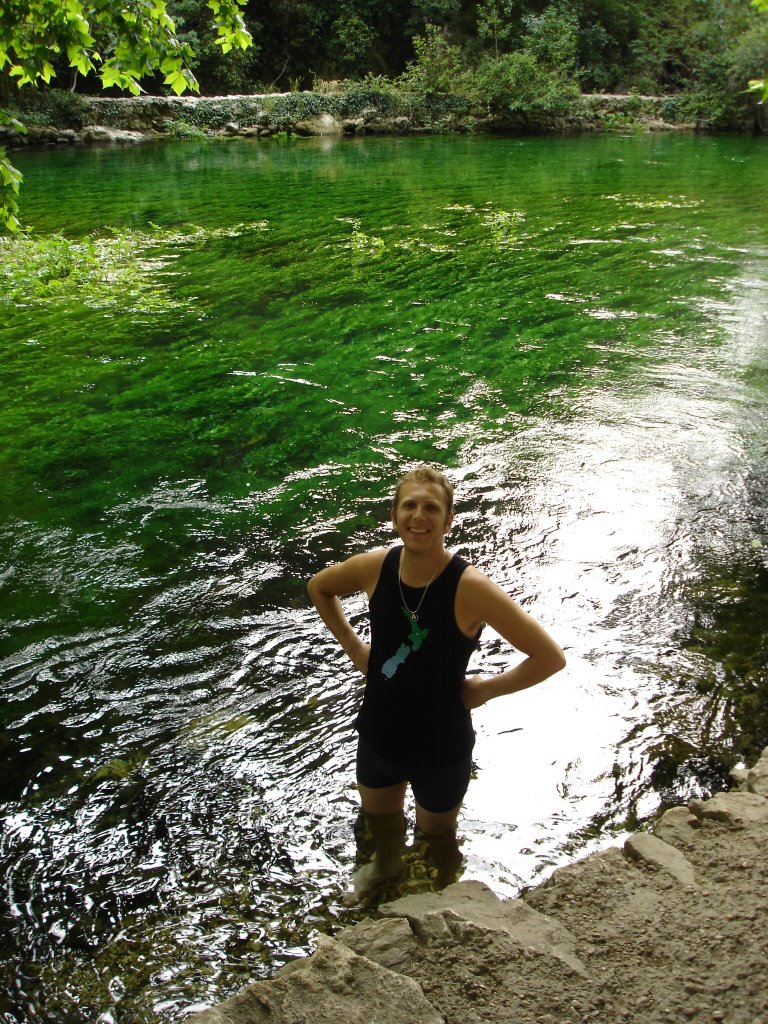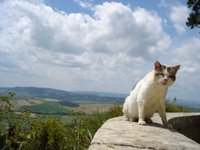The first, the Thyssen-Bornemisza Museum, had the most (relatively) minor collection, but was very well laid out. It was possible to walk chronologically, and lineraly, through the entire collection. This approach is very insightful vis a vis the history of art and its development from Romanesque to Modern, and we enjoyed the galleries very much.
 The second, Museo Nacional del Prado, was so popular as to be Madrid's Louvre, but had a disappointingly schizophrenic and rambling lay-out. It was also run by frustratingly small-minded museum staff. I was looking forward to a particular painting by El Greco (it features on a Vangelis album cover, the music of which is themed to the artist's work) which, although part of the permanent collection, was hanging in the temporary exhibition space. It was visible from the exit so I asked the guard to let me have a closer look - afterall, I had paid to see it and I wasn't interested in the temporary exhibition (Picasso, of whom we'd already seen plenty). Long story short, after much heated discussion, he pointedly refused - despite the painting being only a few feet away. So close and yet so far - you may understand why I was so riled.
The second, Museo Nacional del Prado, was so popular as to be Madrid's Louvre, but had a disappointingly schizophrenic and rambling lay-out. It was also run by frustratingly small-minded museum staff. I was looking forward to a particular painting by El Greco (it features on a Vangelis album cover, the music of which is themed to the artist's work) which, although part of the permanent collection, was hanging in the temporary exhibition space. It was visible from the exit so I asked the guard to let me have a closer look - afterall, I had paid to see it and I wasn't interested in the temporary exhibition (Picasso, of whom we'd already seen plenty). Long story short, after much heated discussion, he pointedly refused - despite the painting being only a few feet away. So close and yet so far - you may understand why I was so riled. The second, Museo Nacional del PradoToday we saw work by Agnolo Gaddi, Barnardo Daddi, Simone Martini, Jan Van Eyck, Della Robbia, Uccello, Gozzoli, Veneziano, Holbein, Ghirlandaio, Piero della Francesca, Crespi, Tintoretto, Fra Bartolomeo, Fra Angelico, Carpaccio, Titian, Lorenzo Lotto, Bronzino, Raphael, Botticelli, Il Veronese, Tiepolo, El Greco, Caravaggio, Rembrandt, Goya, Velazquez, Bosch, Carreggio, Parmigianino, Cranach, Durer, Rubens, Brueghel, Corot, Gainsborough, Dante Gabriel Rossetti, Waterhouse, Fragonard, Manet, Whistler, Gericault, Van Gogh, Pissarro, Monet, Sisley, Renoir, Degas, Toulouse-Lautrec, Sargent, Pierre Bonnard, Vuillard, Gauguin, Munch, Braque, Otto Dix, Grosz, Kirchner, Mondrian, Leger, Krupka, Popova, Klee, Chagall, Magritte, Dali, Ernst, Miro, de Kooning, Pollock, Rothko, Bacon, Rauschenberg, Lichtenstein, Kandinsky, Robert Delauney, Matisse, Derain, Picasso, Juan Gris, O'Keefe and Modigliani, (in vague order).
The second, Museo Nacional del PradoToday we saw work by Agnolo Gaddi, Barnardo Daddi, Simone Martini, Jan Van Eyck, Della Robbia, Uccello, Gozzoli, Veneziano, Holbein, Ghirlandaio, Piero della Francesca, Crespi, Tintoretto, Fra Bartolomeo, Fra Angelico, Carpaccio, Titian, Lorenzo Lotto, Bronzino, Raphael, Botticelli, Il Veronese, Tiepolo, El Greco, Caravaggio, Rembrandt, Goya, Velazquez, Bosch, Carreggio, Parmigianino, Cranach, Durer, Rubens, Brueghel, Corot, Gainsborough, Dante Gabriel Rossetti, Waterhouse, Fragonard, Manet, Whistler, Gericault, Van Gogh, Pissarro, Monet, Sisley, Renoir, Degas, Toulouse-Lautrec, Sargent, Pierre Bonnard, Vuillard, Gauguin, Munch, Braque, Otto Dix, Grosz, Kirchner, Mondrian, Leger, Krupka, Popova, Klee, Chagall, Magritte, Dali, Ernst, Miro, de Kooning, Pollock, Rothko, Bacon, Rauschenberg, Lichtenstein, Kandinsky, Robert Delauney, Matisse, Derain, Picasso, Juan Gris, O'Keefe and Modigliani, (in vague order).




































